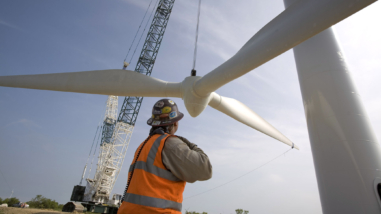Putting people first: Our climate communications grantmaking strategy
Solving climate change will also require a much deeper integration of movement building and narrative development, as well as much deeper and more diverse public engagement than ever before. Among other tasks, this means that we must invest more deeply in efforts to engage and reach more diverse populations, both in the U.S. and around the globe.
Recognizing these urgent needs, last year, we dedicated an additional $20 million to support public engagement efforts through 2022, specifically to complement and make more robust the communications and public engagement grantmaking already underway.
This decision followed a robust analysis in 2018-2019 to determine the best use of our funds in this area. To inform our thinking, we commissioned a field assessment focusing on climate communications, looking specifically at the climate advocacy field’s shared assets and infrastructure for public engagement and communications, mostly focused in the U.S. The assessment involved more than 60 stakeholder interviews of leaders and experts inside and outside of the climate field — from grassroots and justice leaders to advocacy coalition and network leaders to technologists and communications leaders, a literature review of more than 100 academic and field strategy papers and evaluations, four outside case studies, and four working groups of climate communications practitioners and funders to identify rising opportunities.
In keeping with the aim of our overarching climate strategy, we looked at strategies to support bold, transformative change as opposed to incremental change. While majorities of people around the world support aggressive climate policies, our policies still do not reflect that support. So, we must further rally the public so that the need for strong, widespread, and durable climate action is no longer contested — and so that policymakers feel compelled to act in accordance with public demands.
Last year, we drafted our grantmaking strategy and began to implement it with grants to groups such as the Climate and Clean Energy Equity Fund, the Center for Cultural Power, the Climate Advocacy Lab, the Potential Energy Coalition, and more. And in the year since, we have further refined and updated the strategy based on much additional input from partners around the world.
This resulting strategy, which will guide additional Hewlett grantmaking from this special fund through 2022, revolves around a set of objectives that emerged from this work:
Center our communications funding approach around people, and support communities and constituencies: This means starting with people, understanding what matters most to a diverse range of communities, and partnering with and investing in these communities and constituencies to build their own capacity for communications and public engagement. For too long, climate communications have narrowly centered around policies, science and statistics, laws and regulations, carbon emissions targets, and climate outcomes rather than people. This explains, at least in part, the climate field’s difficulty in engaging populations outside of the environmental “base” — and its past challenges in bringing in diverse communities across the political spectrum. Focusing on investing in building communications capacity in constituencies and communities is thus a key strategic imperative for our communications grantmaking.
Philanthropic partnership will be key here. We will work to partner with organizations, including both in the grantee field and among foundations such as the Climate and Clean Equity Fund, who are closely connected to a diverse range of communities and populations, and whose experience and knowledge can help us direct our support.



